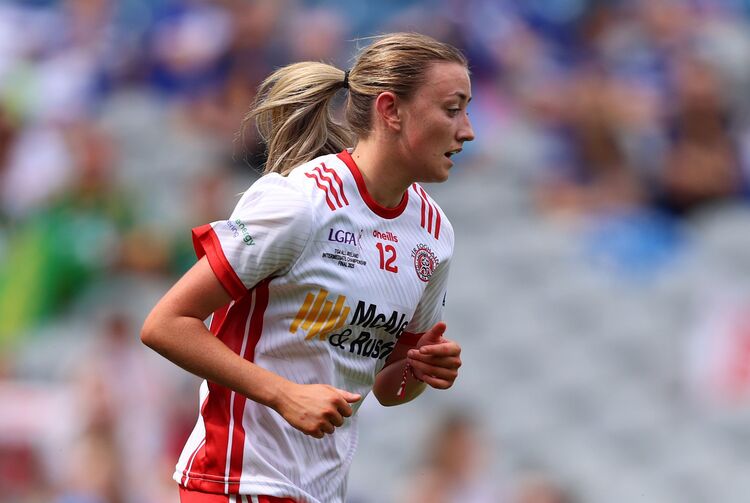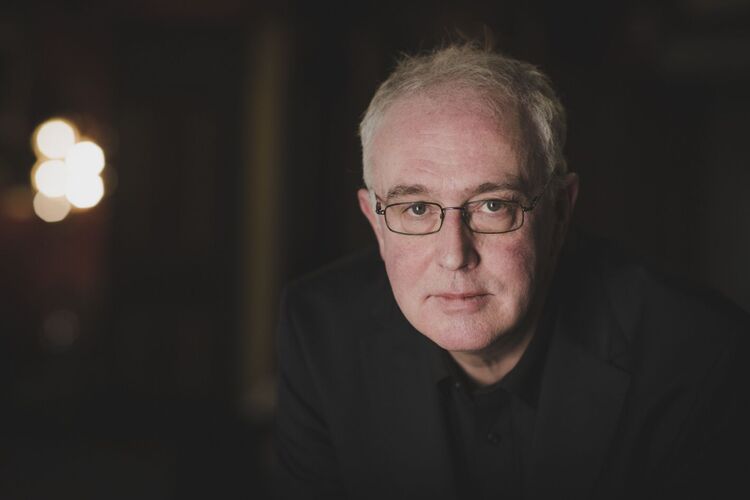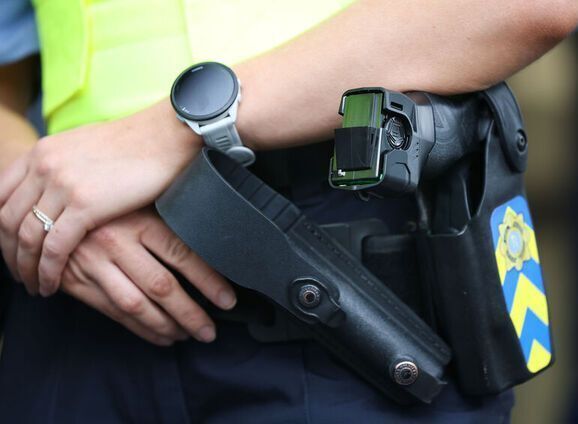By Earle Hitchner
“He is my teacher, mentor, and inspiration all rolled into one. His patience with young dancers, his love for music and rhythm, his good sportsmanship, and his genuine love of dance of all forms are what I think about when I think of Donny.”
The “Donny” is Brooklyn’s Donny Golden, one of the most successful and influential Irish stepdancers and stepdancing instructors in the world. Those complimentary words were spoken during an interview conducted by Elizabeth Venable with perhaps Donny’s most famous pupil, Jean Butler, the original lead dancer (with Michael Flatley) in “Riverdance.”
Before that show catapulted Irish dance onto a global stage, Donny Golden and a teenaged Jean Butler often stepdanced as a duo at various concerts and festivals in America. Donny also succeeded Michael Flatley as a featured stepdancer at Chieftains concerts in the U.S., and today he still guests with the band at regional concerts, often with Jean’s younger sister, Cara, as his onstage partner.
Jean and Cara Butler are just two of the many gifted pupils taught by Donny Golden. The list includes Winifred Horan, a founding fiddler in the band Solas and described by Golden as “just a brilliant stepdancer”; Kevin Broesler, now a distinguished instructor himself; John Jennings, a past winner of the All-World Senior Stepdancing Championship; Joe Dwyer, who placed seventh in the All-World competition; Sheila Ryan, who has stepdanced at Carnegie Hall, Radio City Music Hall, and the Glen Echo Irish Folk Festival; and more recently Padraic Moyles, who was featured in “Riverdance: 15th Anniversary Farewell Tour” that stopped off in Radio City Music Hall for eight performances last month.
Irish stepdancing enthusiasts often call the short, seismic performance of “Riverdance” during the intermission at the Eurovision Song Contest in Dublin’s Point Theater on April 30, 1994, as the “seven minutes that shook the world.” Not surprisingly, Irish stepdancing is now often viewed as pre-”Riverdance” and post-”Riverdance” in development.
“Before ‘Riverdance’ there were few outlets for Irish stepdancers after a certain age,” Donny Golden, now 56 years old, explained. “You either taught, or you basically stopped dancing. That changed because of ‘Riverdance.’ It provided a showcase and a living for stepdancers after their competition years were over. It also attracted kids who weren’t Irish American to stepdancing schools, so now we have students of Asian, African American, and other ethnic backgrounds taking Irish dance lessons with Irish American pupils.”
Teaching Irish dance since 1972, Donny is one of eight children born to Patrick Golden from Williamstown, Galway, and Celia (nee McGovern) Golden from Glangevlin, Cavan. “In Brooklyn my parents insisted that all of us kids go to dance or music class, but I wasn’t all that thrilled with the notion at the beginning. No child wants to be told what to do by a parent. They wanted us to grow up with an Irish influence and in an Irish culture and not hang out on street corners in Brooklyn. I actually took lessons on fiddle for a few years from Pete Kelly [now leader of the Premier Ceili Band] above Flanagan’s Bar in Astoria, Queens. But my practice habits weren’t the best, and I was getting better at dancing, so eventually I stuck with just that.”
Donny studied stepdancing for three years with Jerry Mulvihill in the Bronx and afterward took lessons for nine years from Jimmy Erwin, who had opened a class in Bay Ridge. In 1970 Donny had what he modestly describes as “a good year.” He won the North American Irish Dance Championship, finished third in the All-Ireland competitions, and placed second in the All-World championships.
His greatest accolade, however, was in 1995 when he became only the second Irish stepdancer ever to win the National Endowment for the Arts’ National Heritage Fellowship. (A pre-”Riverdance” Michael Flatley was honored in 1988.) I was invited by the NEA to attend the awards ceremony in the East Room of the White House, and I remember how proud Donny looked in receiving his award from First Lady Hillary Clinton and NEA Chair Jane Alexander as Donny’s parents and his sister Eileen, another adept stepdancer, watched from their seats.
At the time, the National Heritage Fellowship came with a one-time stipend of $10,000, which Donny told me he’d spend on a new car to replace one that was falling apart on him. “I need a reliable car to get to my dance classes,” he said matter-of-factly. When I told him a few days ago that the stipend was now up to $20,000, he paused and then said with a laugh, “Is that retroactive?”
Getting to his dance classes remains a top priority for Donny, who each week teaches about 25-30 students in Brooklyn’s Bay Ridge Manor and another 75 or so pupils in the Irish American Center in Mineola, N.Y. “Irish dance never loses its appeal for me,” he said after nearly 40 years of teaching.
To the Donny Golden School of Irish Dance, he brings a balanced measure of seriousness and fun. He usually choreographs at least one dance number where his students can freely move their arms that would otherwise be kept at their sides. “Everyone gets a kick out of it,” he said. Also, for public performances, he prefers that his pupils stepdance to live music to preserve a sense of spontaneity in their movements.
Of his own stepdancing now, Donny quipped, “My mind and heart are willing, but I don’t know if my knees always agree.”
This growing sensitivity to the limitations of his own body has made Golden acutely aware of possible physical discomfort for younger students who try to do too much too soon, often in imitation of the more acrobatic movements made by seasoned stepdancers in splashy stage shows. “Posture is a big part of Irish stepdancing,” he conceded, “but not at the expense of health.”
Golden still enjoys performing in public, and over the years he has also stepdanced with the Green Fields of America, led by Mick Moloney, and Cherish the Ladies, led by Joanie Madden. His hard-shoe stepdancing can be heard on such albums as “Makin’ the Rounds” (1981) by Billy McComiskey, “Uncommon Bonds” (1984) by Mick Moloney and Eugene O’Donnell, “The Green Fields of America: Live in Concert” (1989), and “Threads of Time” (1998) by Cherish the Ladies.
Teaching, performing, choreographing, and adjudicating are all part of Donny Golden’s hectic schedule. When I spoke with him recently, he confessed a first-time blunder. “I’m supposed to judge in Syracuse, but I booked a flight to the wrong city, Buffalo. What was I thinking?”
A safe guess is that he was thinking of all those stepdancing students waiting in different locations for his arrival.
For more information about his school, including registration for his Brooklyn or Mineola classes, visit www.donnygoldenschool.com or e-mail at donnygoldenschool@gmail.com.










